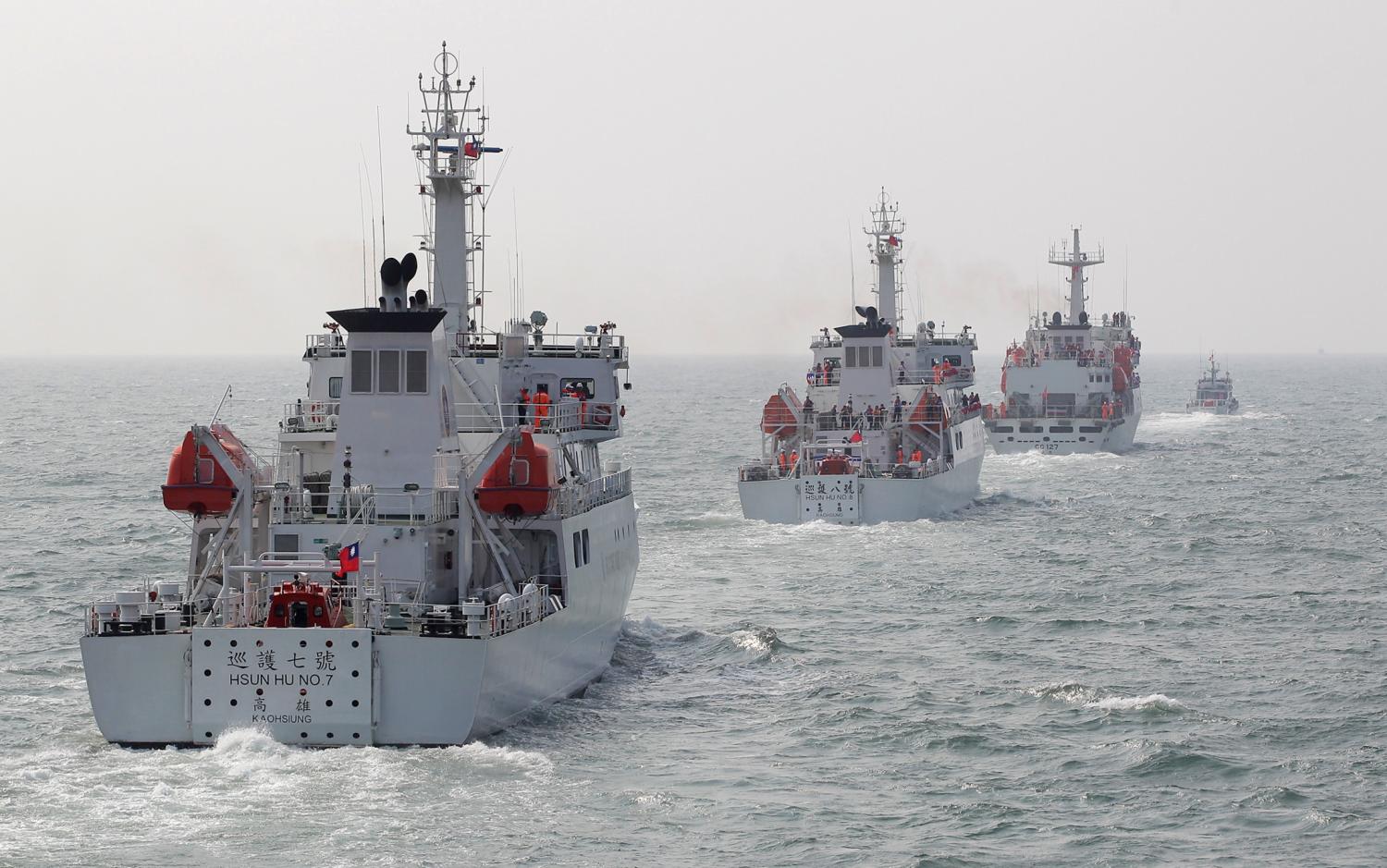Taiwan, along with China and four Southeast Asian countries, is a claimant in the South China Sea, though this fact is sometimes overlooked. On paper, Taiwan and China share the same claims. The dashed or U-shaped line encapsulating much of the South China Sea appears on both Taiwanese and Chinese maps.
Neither China nor Taiwan has officially clarified the meaning of the dashed line which could be seen as making a claim to the wide expanse of water enclosed within the dashed line or (merely) to the land features contained therein and to maritime zones made from them in accordance with the 1982 United Nations Convention on the Law of the Sea (UNCLOS) and international law.
In the past year, Taiwan has taken small but significant steps toward clarifying that its claims are from land and in accord with UNCLOS and international law. It has also adopted a more conciliatory position by advocating that its East China Sea Peace Initiative, which calls on parties to shelve disputes and promote joint exploration and development in the East China Sea (where China, Taiwan and Japan have competing claims), be applied in the South China Sea as well.
These movements are significant in that they could have a stabilizing effect in the South China Sea. The People’s Republic of China (PRC) inherited its claims from the Republic of China (ROC) after the Chinese civil war. Thus, the ROC’s interpretation of its claims is relevant to the PRC’s claims. Notably, a more limited reading of the claims would not be inconsistent with China’s official position as set out in its 2009 and 2011 statements to the United Nations.
Taiwan’s overtures have largely, however, been ignored. At the root of this is China’s “one-China” principle, which has cast a long shadow over Taiwan. This paper argues that in order to carve out a modest political space for itself in the South China Sea, Taiwan should:
- Clarify that its claims accord with UNCLOS and international law without expressly eschewing the dashed line.
- Tread carefully on any public education on Taiwan’s claims in the South China Sea to avoid unleashing nationalist sentiment, which would limit policy options.
- Continue promoting President Ma Ying-jeou’s plan for the East China Sea in the South China Sea.
- Push behind the scenes for participation in code of conduct negotiations and in cooperative activities involving all claimants.
- Provide evidence that Taiping Island is an “island” capable of sustaining human habitation or economic life under UNCLOS Article 121.
The paper also argues that all parties who have an interest in better management of the dispute and a more peaceful region—including China—have an interest in supporting Taiwan’s inclusion in negotiations and activities relating to the South China Sea. This can be done in ways consistent with China’s one-China principle. Proper management of the dispute necessarily involves Taiwan: Taiwan controls the largest land feature in the South China Sea, its vessels regularly patrol the area, and it has one of the biggest fishing industries in the Pacific.
For China, supporting Taiwan’s participation in cooperative activities would support both Beijing’s desire for better cross-strait relations, and its dual-track approach to the South China Sea dispute, which seeks one-on-one negotiations on sovereignty issues and multilateral arrangements within the region to promote peace and stability in the South China Sea.
The paper lays the foundation for these arguments by taking a closer look at calls within the United States for Taipei to “clarify” or “abandon” its dashed line; examining Taiwan’s claims in and evolving position on the South China Sea; and highlighting salient Chinese responses and the broader context within which Taiwan operates as a means by which to gauge the viability of various courses of action.



